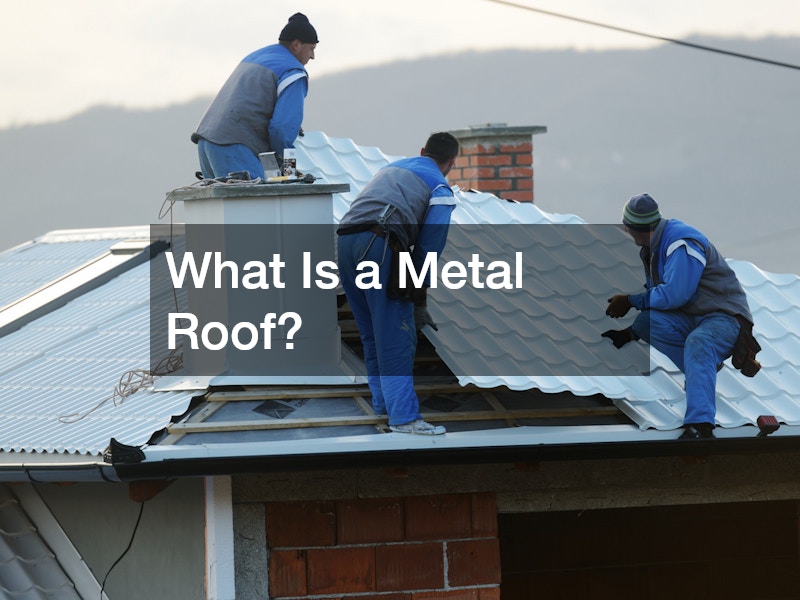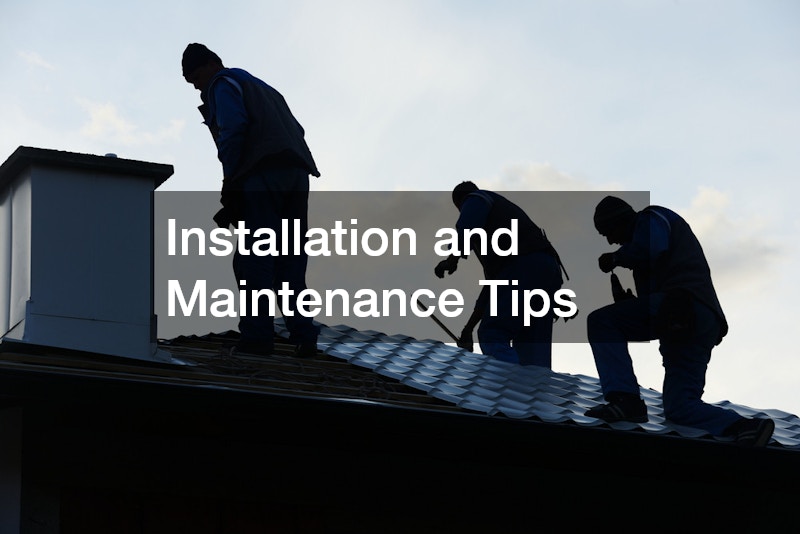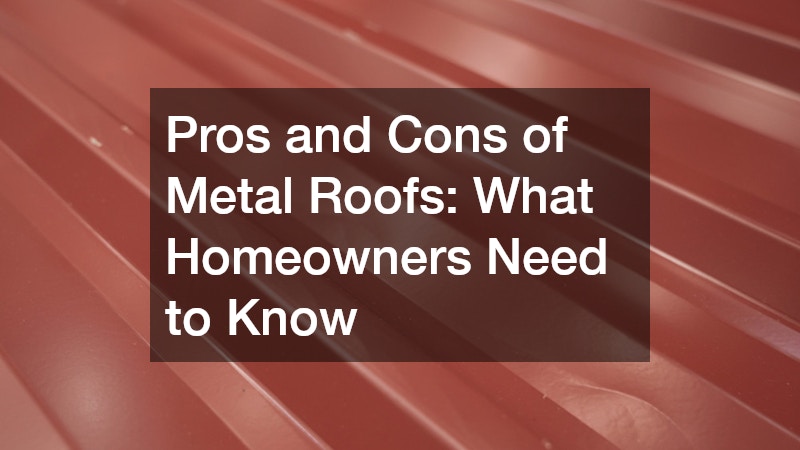Choosing the right roof is one of the most important decisions for any homeowner. Your roof protects your home from weather, affects energy bills, and can even impact curb appeal. Metal roofs have become popular in recent years, but are they the right choice for you?
This article will break down the pros and cons of metal roofs so you can understand their benefits and drawbacks. Whether you’re building a new home or considering a roof replacement, this guide will help you weigh the options carefully.
What Is a Metal Roof?

Metal roofs are made from panels or shingles crafted from materials like steel, aluminum, copper, or zinc. These roofing systems are designed to be durable, lightweight, and resistant to harsh weather conditions. Metal roofing can come in many styles and colors, mimicking traditional materials like shingles or tiles.
Pros of Metal Roofs
Metal roofs offer several advantages that make them attractive to homeowners:
- Longevity and Durability
One of the biggest benefits of metal roofing is its long lifespan. While traditional asphalt shingles typically last 15 to 30 years, metal roofs can last 40 to 70 years or more. They resist cracking, shrinking, and erosion better than other materials.
- Metal resists wind, rain, snow, and hail damage.
- It won’t rot, warp, or suffer from insect damage like wood.
- Resistant to fire, metal roofs can provide extra safety during wildfires.
- Energy Efficiency
Metal roofing reflects solar radiant heat, which can reduce cooling costs in warm climates by up to 25%. Many metal roofs are also coated with special reflective finishes that improve their energy-saving qualities.
- Keeps your home cooler in summer.
- Can be paired with insulation for better year-round efficiency.
- Lightweight
Compared to tile or slate, metal roofing is much lighter. This means less stress on your home’s structure and easier installation. It also means metal roofs can often be installed over existing roofs, saving on removal costs.
- Low Maintenance
Metal roofs require less maintenance than other types of roofing. They don’t need frequent repairs or replacement of shingles. Simple cleaning and inspection every year or two are usually enough.
- Environmentally Friendly
Most metal roofs contain recycled materials and are 100% recyclable at the end of their life. This reduces landfill waste and makes metal roofing a sustainable option.
- Variety of Styles and Colors
Modern metal roofs come in a wide range of styles, including standing seam panels, corrugated sheets, and shingles that mimic wood or tile. This variety allows homeowners to find a metal roof that fits their home’s look.
Cons of Metal Roofs
While metal roofs have many advantages, there are also some downsides to consider:
- Higher Initial Cost
Metal roofing is generally more expensive upfront compared to asphalt shingles. The cost can be 2 to 3 times higher, depending on the metal type and style. Installation also requires skilled professionals, which can add to expenses.
- Cost can be a barrier for some homeowners despite long-term savings.
- Noise
During heavy rain, hail, or storms, metal roofs can be noisier than other roofing types. Without proper insulation, the sound of rain hitting metal can be disturbing, especially if you are sensitive to noise.
- Expansion and Contraction
Metal expands and contracts as temperatures change. Over time, this can cause fasteners to loosen or panels to warp if not properly installed. This means installation quality is very important for longevity.
- Denting and Scratches
While metal is strong, it can dent or scratch from heavy hail or falling branches. These imperfections can affect the roof’s appearance and, if severe, may reduce its lifespan.
- Color Fading
Some metal roofs may fade or chalk over many years due to sun exposure. High-quality paint finishes reduce this risk, but it is still a possibility to consider.
Factors to Consider When Choosing a Metal Roof
Deciding whether a metal roof is the right choice for your home involves more than just looking at its price or appearance. There are several important factors to think about to ensure you make the best decision for your specific needs.
Climate:
Metal roofs are known for their excellent performance in harsh weather conditions. They can withstand heavy rain, strong winds, snow, and even resist damage from hail better than many other roofing materials. Their fire-resistant properties also make them ideal for areas prone to wildfires. However, metal roofs can be noisier during rain or hailstorms compared to asphalt shingles or tile roofs. If you live in a region with frequent heavy rain or hail, it’s important to invest in proper insulation beneath the metal roof to reduce noise.
Budget:
While metal roofing typically has a higher upfront cost than traditional materials like asphalt shingles, it can save you money in the long run. Metal roofs last much longer—often 40 to 70 years—meaning fewer replacements over time. They also reflect heat well, which can lower your home cooling costs during hot months. When budgeting, consider these long-term savings and balance them against your initial investment to decide if a metal roof fits your financial plan.
Style:
Metal roofs come in many styles, colors, and finishes. You can find options that mimic the look of classic shingles, tiles, or even wood shakes. Think about your home’s architectural style and the overall curb appeal you want to achieve. Some metal roofing styles work better with modern homes, while others complement traditional or rustic designs. Choosing a style that matches your home’s look will boost its value and aesthetic appeal.
Installation:
Installing a metal roof requires specialized tools and skills. Not every roofing contractor has experience with metal roofing systems. Hiring an installer who is knowledgeable about metal roofing ensures the job is done correctly, minimizing the risk of leaks, loose panels, or damage. Look for contractors with good reviews, proper licensing, and metal roofing certifications. Proper installation also helps maximize your roof’s lifespan and warranty coverage.
Maintenance:
Metal roofs are low-maintenance compared to other roofing types, but they’re not maintenance-free. You should inspect your roof regularly for signs of damage, such as loose fasteners, dents, or scratches. Keeping gutters clean and trimming nearby tree branches will prevent debris buildup and reduce the chance of roof damage. Understanding how to care for your metal roof will help you avoid costly repairs and keep it looking great for years to come.
Common Types of Metal Roofing Materials
Choosing the right metal for your roof is an important decision that affects durability, cost, and appearance. Each metal type has unique properties that make it better suited for certain climates, budgets, and design preferences. Here’s a closer look at the most popular metal roofing materials:
Steel
Steel is the most commonly used metal for roofing, thanks to its strength, affordability, and versatility. It is typically coated with a layer of zinc (known as galvanized steel) or a zinc-aluminum alloy (galvalume) to protect against rust and corrosion. Steel roofs are very durable and can withstand heavy weather conditions such as wind, hail, and snow. They are also easy to shape into different roofing styles, from standing seam panels to shingles. Because of its widespread availability, steel offers a good balance of cost and performance for many homeowners.
Aluminum
Aluminum roofing is prized for its lightweight nature and excellent resistance to rust and corrosion. This makes it especially popular in coastal areas where salty air can accelerate the deterioration of other metals. Aluminum is also relatively low-maintenance and can be painted in a variety of colors. While it tends to cost a bit more than steel, its long lifespan and resistance to corrosion make it a smart investment for homes near oceans or humid climates.
Copper
Copper roofs are known for their distinctive beauty and exceptional durability. Copper develops a natural greenish patina over time, which protects the metal from corrosion and gives the roof a unique, elegant look. Because of its premium materials and complex installation process, copper is one of the most expensive roofing options. However, copper roofs can last over 100 years with minimal maintenance, making them an investment that lasts for generations. Copper is also naturally antimicrobial, resisting mold and mildew buildup.
Zinc
Zinc roofing is similar to copper in terms of its long lifespan and unique aging process. Zinc develops a protective patina that helps it self-heal minor scratches and imperfections over time, maintaining its appearance and performance. Zinc roofs are highly durable and resistant to corrosion, but they come with a higher upfront cost. Their natural look and longevity make zinc an excellent choice for homeowners seeking a premium, low-maintenance roof with distinctive style.
Installation and Maintenance Tips

Proper installation and ongoing maintenance are essential to get the most out of your metal roof. Although metal roofs are durable and long-lasting, mistakes during installation or neglect in upkeep can lead to costly problems down the line. Here’s what you need to know:
Professional Installation Is a Must
Metal roofing requires specialized tools and skills that differ from traditional shingle installation. The panels or shingles need to be fastened securely to avoid leaks and withstand strong winds. Improper sealing or fastening can cause water intrusion and reduce the roof’s lifespan. Hiring experienced roofing professionals who are trained in metal roofing systems ensures that your roof is installed correctly, meets local building codes, and maintains warranty coverage.
Regular Inspections Are Important
Even though metal roofs are tough, they still require periodic inspections. Look for loose or missing fasteners, dents from hail or falling branches, scratches, or areas where the protective coating has worn away. Early detection of problems lets you fix them before they cause leaks or rust. It’s best to schedule a roof inspection at least once a year, ideally before and after severe weather seasons.
Keep Gutters Clean
Clogged gutters can cause water to back up and pool near your roof edges, potentially damaging flashing and causing leaks. Regularly clearing leaves, dirt, and debris from gutters helps water flow freely and protects your metal roof and home’s foundation. Consider installing gutter guards to reduce debris buildup and make maintenance easier.
Trim Overhanging Trees
Branches hanging over your roof can rub against metal panels, causing scratches and dents. During storms, falling limbs may severely damage your roof surface. Regularly trim any trees near your home to prevent contact and protect your investment.
Clean Debris and Dirt From the Roof Surface
Leaves, dirt, and moss can accumulate on metal roofs, especially in shaded or humid areas. This buildup can trap moisture, leading to corrosion or stains. Cleaning your roof with a soft broom or low-pressure water rinse can help maintain its appearance and prevent damage. Avoid harsh chemicals or abrasive tools that might scratch the protective finish.
By following these installation and maintenance tips, you’ll keep your metal roof looking great and performing well for many years to come.
How Metal Roofs Compare to Other Roofing Materials
| Roofing Type | Lifespan | Cost (per sq. ft.) | Maintenance | Weight | Energy Efficiency |
| Asphalt Shingles | 15-30 years | $1 – $4 | Moderate | Heavy | Moderate |
| Metal Roofs | 40-70+ years | $5 – $12 | Low | Lightweight | High |
| Tile Roofs | 50-100 years | $7 – $15 | Low | Very heavy | Moderate |
| Wood Shingles | 20-40 years | $6 – $9 | High | Moderate | Low |
| Slate Roofs | 75-100+ years | $10 – $20+ | Low | Very heavy | Moderate |
Conclusion: Is a Metal Roof Right for You?
Metal roofs offer exceptional durability, energy efficiency, and aesthetic options. They can protect your home for decades with minimal maintenance. However, the higher upfront cost and noise concerns mean metal roofing isn’t the perfect fit for every homeowner.
Weighing the pros and cons of metal roofs against your budget, style preferences, and climate will help you make an informed choice. If you want a long-lasting, eco-friendly roof with strong protection, metal might be the right option for you.
